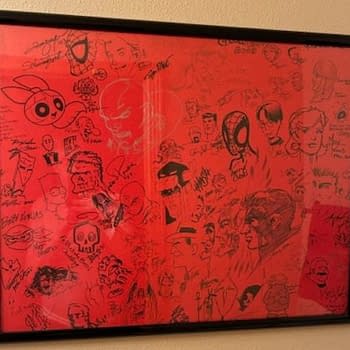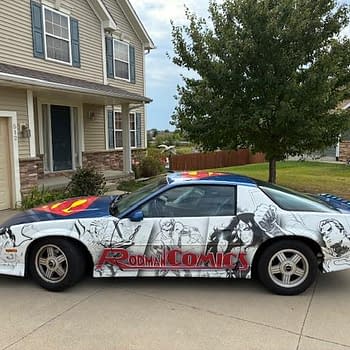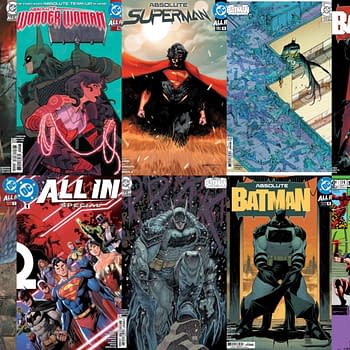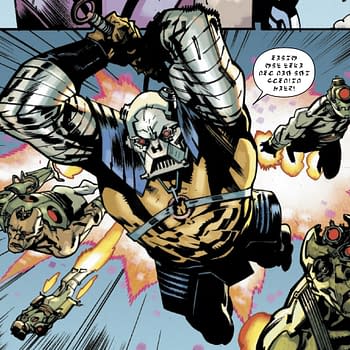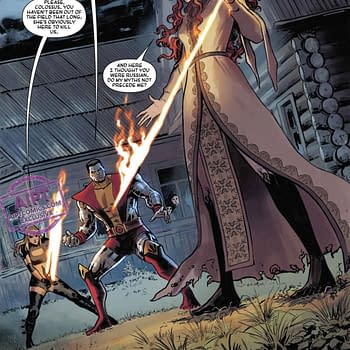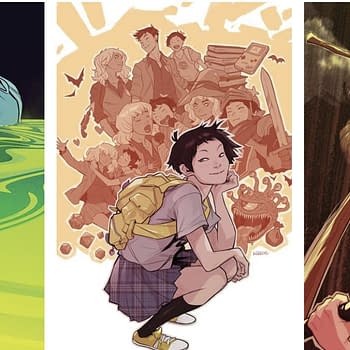Posted in: Comics, Comics Publishers, DC Comics, Marvel Comics | Tagged: comic shop, comic store in your future, continuity
Establishing A Little Continuity – Comic Store In Your Future
Rod Lamberti of Rodman Comics of Ankeny, Iowa, writes weekly for Bleeding Cool. Find previous columns here. And it's time to write about change.
At times comic books have a unique form of storytelling. Comic books have been around for decades. Comic book continuity is a comic publisher's attempt to link various stories told by the publisher together. Some people love comic book continuity; some do not. Why do comic book publishers use continuity? It is a great way to try to increase sales with crossovers. King in Black is the latest Marvel crossover. People may say one does not have to read each issue of a crossover, though let us be honest. Marvel wants sales. Marvel wants as many people as possible to buy every issue of a crossover, as does each publisher that has crossovers. Publishers use continuity to try to increase sales. King in Black-Black Knight is part of the crossover for sale. I am a Black Knight fan from way back when he joined the Avengers and was part of the team during the Masters of Evil storyline where the Masters take over Avenger's Mansion. In this current comic market, a limited series with Black Knight would be hard for Marvel to sell well. Slap King in Black on a Black Knight series, and Marvel feels it has a better chance.
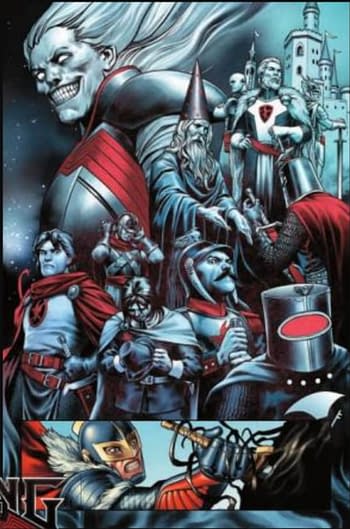
Comics have a limited number of pages to tell a story. To save time and page space, a villain or other character that has been in comics previously helps move the storyline without wasting time and pages introducing a new character that could be used for the writer's main story. For instance, when Lex Luthor or Doctor Doom appeared, the writer assumes the reader already knows who the characters are. Instead of explaining who these characters are, the writers can work more on the plot. Introducing a new character to fight the heroes usually takes more pages and creativity. Any new characters often take time and page count. Supporting characters often work the same way. The average person knows who Mary Jane is. Already created characters often have a built-in audience. It can be much easier to tell stories about already popular characters than to start from scratch. Over the years, I have lost track of "new" characters that have never been heard from again. Does anyone remember Gorilla Comics from 2000? Some of the characters were used again over the years though none of them really broke through and managed to stay around. It can be very tough and costly to get a new character to stick around. Characters that have been in print over the years have an advantage, with at least some people knowing who the character or characters are. It is built-in popularity.
I enjoy continuity. It helped get me sucked into Marvel Comics when I was a kid. I do get annoyed when crossovers are unable to keep their continuity straight within a crossover. If you want people spending money on a crossover, a good thing would be to at least have a good editor with the power and ability to keep it all straight for the readership.
Continuity gets more difficult the longer a comic or character has been around. When Superman first appeared, it was in Action Comics published in 1938. Times, of course, have changed. The way people talked, phrases used decades ago now can have a different meaning or are no longer considered acceptable. Modern-time characters not nearly as old as they would be if normal years were passing cause questions to come up. Such as why didn't someone just use their cell phone to call for help or notify authorities? It is simple, decades ago, cell phones did not exist, yet somehow the storyline still happens.
Some of my customers say they have trouble remembering month to month what happens in a comic. Now try to get them to remember something being brought up from a year ago. In this day and age of instant gratification and have to have it now, continuity could mean far less for people.
I do wish Marvel Handbooks and DC Who's Who would start again. I know these books helped me learn about various characters, including some of the lesser-known characters, and become familiar with comic locations before they appeared in a comic I was reading. Yes, characters can be looked up online, though it would be great to have an updated Marvel Handbook and DC Who's Who with great art on the cover to get people interested in lesser-known characters. The Trapster and Atomic Knight need some love.
The best material for me in the '80s that helped me get into comics was the Marvel TSR and DC Mayfield role-playing games. I most likely do not want to know how many hours of my life I used reading those books as a kid. I would not mind seeing Marvel and DC return with new updated role-playing games. Take the old Marvel TSR rules and make it easier for someone to dodge out of the way of an attack. DC could use a new updated numbering system. With the popularity of D&D right now, I am surprised no one is trying to get superhero role-playing games going again. Side note, why with the current collectible card game market, is there still no new Star Wars or new Star Trek collectible card game? Not everything from the '90s was completely bad.
I remember trying to get into the Legion 5 Years Later restart. Then I read the DC RPG 2995 Legion of Superheroes Sourcebook and thought, wow, that is a lot more info about the 5 Years Later than the Legion comic itself had.
Continuity can be selective. Mark Waid's Flash run was a great time for many to be a Flash fan even though not every story idea was a hit with fans. Cobalt Blue being Barry Allen's unknown twin brother who also happened to have a complicated backstory, did not make Cobalt Blue a popular character at the time. A lot of fans blocked it out. Flash fact: Barry Allen and his brother were born in Fallville, Iowa. Oddly enough, there is not a real town named Fallville in Iowa. Fallville, Iowa, first appeared in Flash #126 in 1962. Waid used continuity by using Fallville, which he did a lot. That said, one of my favorite Flash storylines is Waid's, the Return of Barry Allen from 1993. Again, not everything from the '90s was bad. I still remember the storyline and still enjoy it to this day.
With so many different properties with their own built-in universes and continuities, I am surprised the publishers do not use continuity more and do it better. Good stories should be the primary goal for publishing a comic. Continuity can be used to get people interested in other books. Be it a direct crossover or a simple Easter egg with a character reading a headline in a newspaper about what another character did in another book. Continuity can be a fun extra bonus after reading a comic; knowing a writer has the knowledge and put in the extra work.


